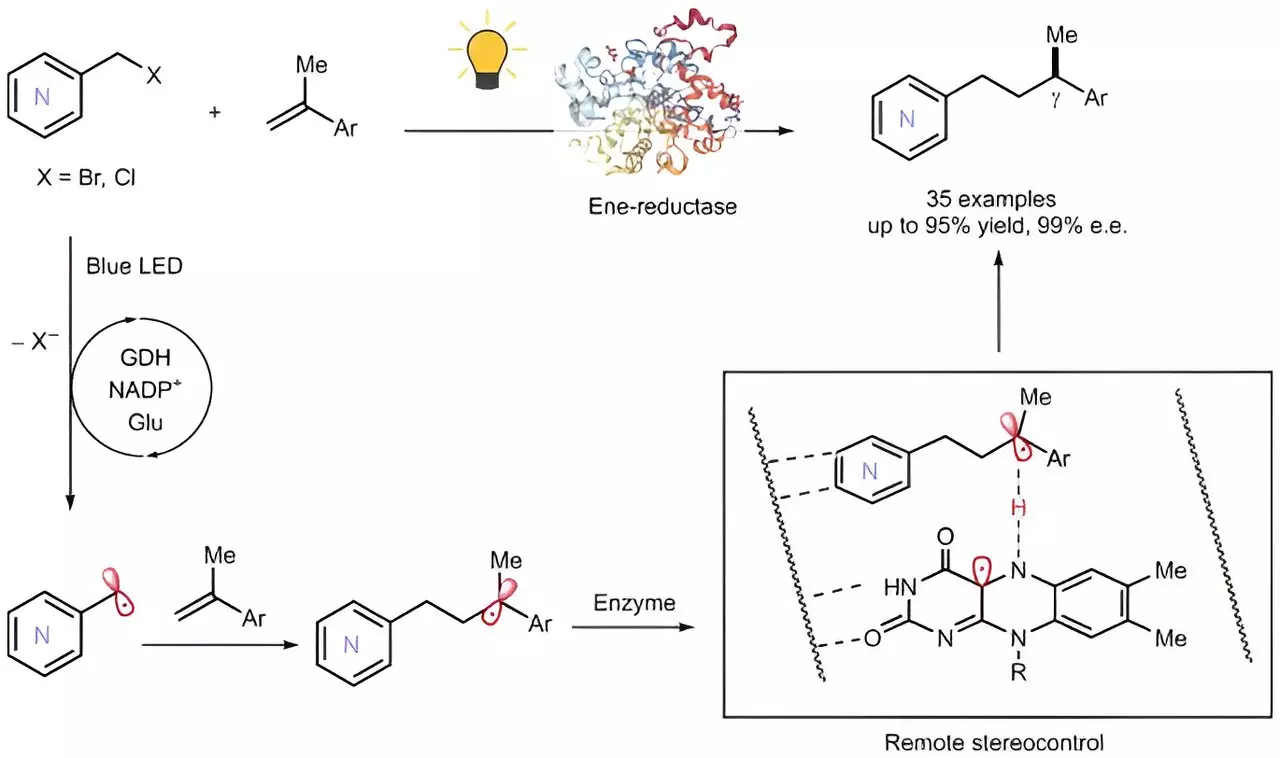The field of molecular chemistry has seen a significant leap forward, thanks to the groundbreaking research conducted by the Center for Advanced Bioenergy and Bioproducts Innovation (CABBI) team. Their exploration focuses on azaarenes, which are unique molecular components crucial for a variety of everyday products, ranging from eco-friendly agrochemicals to essential medicines. By harnessing the power of light and utilizing photoenzymatic systems, the researchers have made extraordinary progress in modifying these molecules and unlocking new chemical reactions with potential applications in sustainable energy solutions.
Photoenzymatic systems have been key in driving the researchers’ breakthroughs. By supercharging enzymes, nature’s tiny workers, with a flashlight, the scientists enable them to assemble or repair molecular structures in unprecedented ways. This innovative approach has allowed the team to uncover new chemical reactions that were previously considered unattainable. Through their study, published in Nature Chemistry, the team has demonstrated the immense potential of photoenzymatic systems in molecular chemistry.
Unlocking the Potential of Azaarenes
Azaarenes, which may seem minuscule in the vast universe of chemistry, play an essential role in various compounds, including the very DNA within our cells. However, manipulating these molecules has posed a significant challenge. The researchers at CABBI have developed an ene-reductase system, a specialized molecular toolkit utilizing the ene-reductase enzyme previously employed in Zhao’s lab’s prior studies. This breakthrough has enabled the intricate modification of azaarenes without causing collateral damage.
Enantioselective Hydrogen Atom Transfer
One of the remarkable achievements of the CABBI team’s work lies in their mastery of enantioselective hydrogen atom transfer. Many molecules exist in left- and right-handed versions, known as enantiomers. The team’s method allows for the selective targeting and adjustment of either enantiomer with unparalleled precision. Additionally, through remote stereo control, these precise adjustments can be made from a distance. This breakthrough opens up new possibilities for the bioenergy sector and helps pave the way for a greener and more sustainable future.
The discovery made by the CABBI team represents a significant turning point for the bioenergy sector. Biofuels and bioproducts, derived from plant material instead of non-renewable resources like petroleum, offer a more sustainable and environmentally-friendly alternative. The research carried out by the team has expanded the range of chemical reactions and bioproducts that can be efficiently produced. Moreover, by introducing the concept of asymmetric photocatalysis, a revolutionary technique ensuring consistency in these reactions, the team has paved the way for producing biofuels and bioproducts from a wider range of biomass feedstocks.
The potential for real-world applications stemming from this groundbreaking research is immense. From spearheading sustainable energy initiatives to developing safer agricultural chemicals, advancements in bioenergy and bioproducts can lead to economic growth, the creation of new industries and jobs, and the availability of more affordable energy sources. Additionally, by promoting sustainable and efficient production methods, this research has the potential to reduce pollution and environmental degradation, resulting in cleaner air and water for communities.
A Glimpse of the Future
As the world faces environmental challenges and an urgent need for sustainable solutions, discoveries like these offer a beacon of hope. The implications of this research go beyond the nuances of chemical reactions; they represent the future of sustainable energy and more. Witnessing the transformative possibilities of these findings, the researchers involved in this project, such as postdoctoral research associate Maolin Li, are excited about the journey ahead. Li recognizes the potential of azaarenes and their ability to reshape industries and pave the way for a more sustainable future.
The research conducted by the CABBI team has unlocked new possibilities in the field of molecular chemistry. Their innovative approach, utilizing photoenzymatic systems and ene-reductase technology, has revolutionized the modification of azaarenes, leading to the discovery of novel chemical reactions and bioproducts. This breakthrough has the potential to catalyze advancements in various sectors, including bioenergy and bioproducts, promoting a greener, more sustainable, and economically prosperous future. As we strive for eco-friendly production methods and the development of safer alternatives, these findings pave the way for a brighter and more innovative world.


Leave a Reply